Marramarra Lodge provides happy camping by the Hawkesbury
Just an hour north of Sydney is the latest addition to Australia’s burgeoning glamping scene.
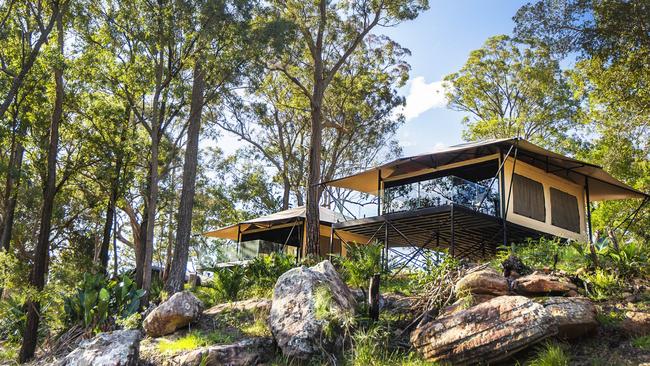
I wake to the call of a lone kookaburra, fluffed up on the railing of my high deck. I spy the bird through a window-wall overlooking sturdy native bushland and glimpses of deep green water. The sky is lightening but the day promises to be cool and overcast. I feel not the least bit guilty about staying in bed a bit longer, propped up with big woollen cushions and fine white pillows. My canvas habitat is named Wirriga, meaning goanna in the language of the Dharug people, whose ancestral grounds extend inland to the foothills of the Blue Mountains. While I am not exactly basking on a rock in the sun, I do feel lazy, perhaps channelling a lounge lizard totem.
Staying in tents has come a long way since the rallying loudspeaker cries of “Good morning, campers!” at the “fitness camps” of my youth and all that tedious wrestling with pegs, soggy canvas and uncooperative zippers. Glamping is now all the go and most such encampments offer plenty of the glamour that the G-word implies. One of the latest on the radar is Marramarra Lodge, an hour north of Sydney, set on a 5.5ha patch of bushy ridge at Fishermans Point, surrounded by national park to the west of the Mooney Mooney Bridge, overlooking the Hawkesbury River.
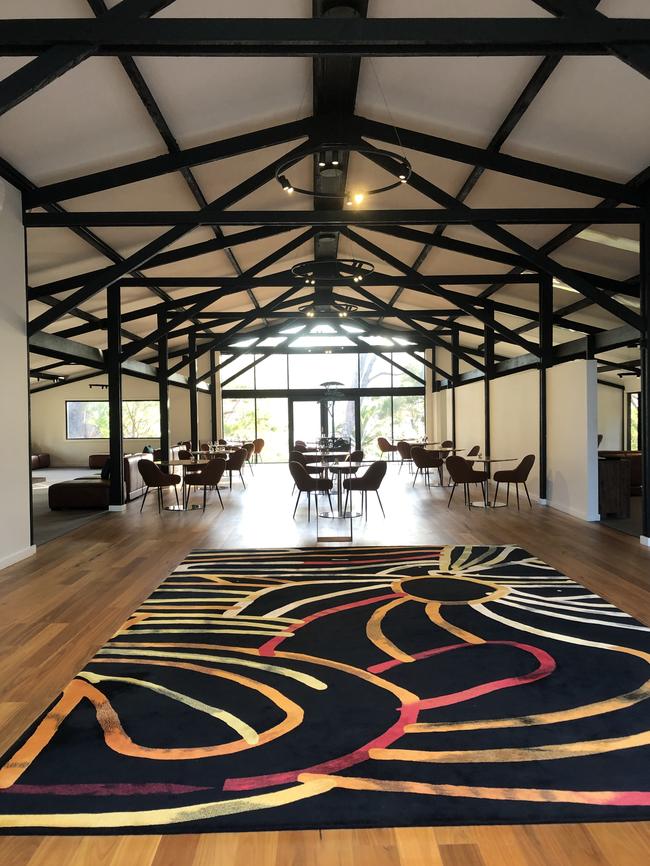
The property opened last year, with capacity for 28 guests across eight double tents, angled towards sunrise or sunset, and six chic little bungalows, with grey-black exteriors and on-trend minimalist fit-outs. The former would be my pick, because they blend tactile cosiness with a generous nod to landscape. The latticed central light fitting throws beams on the canopied canvas ceiling that ripple like the corrugations on the Hawkesbury’s honeyed sandstone cliffs. There are reddish-brown touches in soft furnishings. In the large ensuite, river stone tiles are textured and veined, and the deep washbasins look as if they’ve been scooped from boulders. It’s all very earthed, but with no unnecessary flash except, perhaps, that cargo of indulgent snacks in the minibar and bottle of Didier Chopin fizz.
It’s a world away from the site’s 1920s beginnings as a private holiday retreat, later an Outward Bound adventure camp that hosted the likes of a young Prince Charles, pictured in memorabilia wearing a tie and jacket, hands in pockets. In the 1970s, Knox Grammar School purchased the property as an outdoor training centre; the main structure has been redeveloped and integrated into Marramarra Lodge.
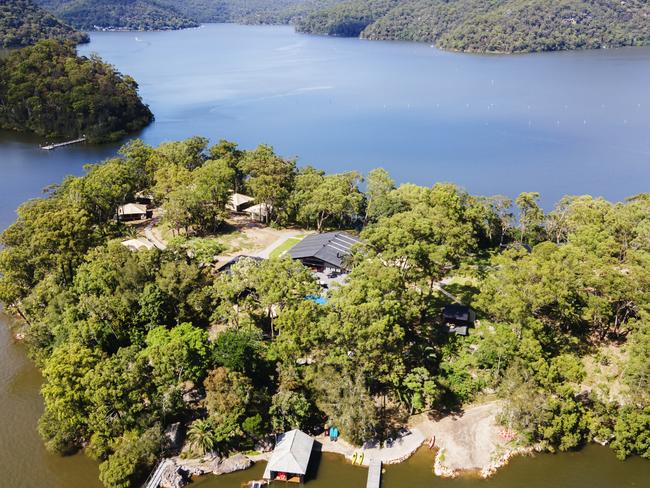
There’s a helipad so a chopper landing is the fashionable way to arrive, or pitch up by seaplane. But most guests take a 20-minute scoot from Mooney Mooney’s Deerubbun boat ramp via one of the lodge’s skippered cruisers, which dock beside a cool little boatshed, artfully painted deep grey and white, and set with watersports equipment and a couple of low-slung lounging chairs. Then it’s a climb up rock-cut steps, or aboard a golf buggy on a sloping route, to the accommodation and facilities, which blend into a setting of eucalypts, spiky palms, cycads and Wollemi pines. There’s a pool surrounded by sun-loungers, recreation building and a high-raftered dining hall, Budyari (or “well” in Dharug), which has the lines and proportions of a contemporary barn, with tables angled for wide water views.
What I like about Marramarra Lodge is that at its heart there is a clear connection to land, water, community and tales of country. Activities range from gentle to gung-ho and even the slightest exertion should be rewarded with a massage or facial featuring products by Australian brand Sodashi. Therapist Mel, who also gives group classes and private sessions onsite in Hatha and Yin yoga, presides over the tiny Iyora Spa and unknots about a year’s worth of tension from my shoulders and lower back. I don’t exactly float back to Wirriga but I am so relaxed I try and open the locked door of a neighbouring tent.
I hike a heritage trail on tiny, slightly ghostly Bar Island at the mouth of Berowra Creek, the bushy contours of which can be seen from Fishermans Point, with guide Shaune, who has Dharug ancestry and is an entertaining escort, sharing stories of his culture and identifying whistling kites circling the treetops and botanical species such as forest she-oaks and Warrigal spinach.
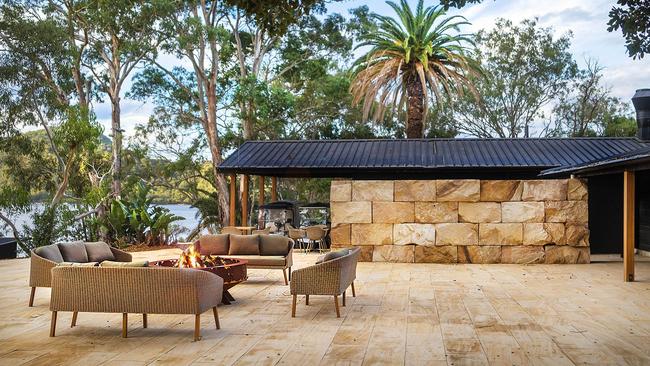
We pause by remnants of an 1870s Anglican church and school that drew its congregation and students from river settlers and traders, some remembered in epitaphs on faded white marble gravestones that attest to short, harsh lives. Before we reboard Shaune’s runabout, bobbing by the mangroves, he shows me a shell midden and, from the spit of sand by the jetty, scrapes off rock oysters that cling as stubbornly as barnacles. He just about convinces me that a splash of river water is the perfect gourmet dressing.
Tucker? No foraging or meagre rations here. Filtered water comes from a spring on the property and good wines are included in the tariff, with premium cellar drops at reasonable cost. The career highlights of French-born chef Jerome Tremoulet include The Ritz London, under master patissier Guy Krenzer, and One & Only Wolgan Valley west of Sydney. His decorative plating, with edible flowers and sprinkles of tiny leaves, seems almost surrealistic amid such a rugged backdrop. Dinners are degustation, featuring five courses and a palate cleanser, and could include the likes of poached marron with braised pencil fennel and Jerez sherry bisque reduction or ravioli of tiger prawn, foie gras, leek and cauliflower. Tremoulet exudes the warmth and generosity I suspect he owes to his Italian grandmother, who he tells me would think nothing of cooking at a moment’s notice for 40 guests at a “casual lunch”. Local produce? Look no further than the watery doorstep of this place of plenty.
Susan Kurosawa was a guest of Destination NSW.
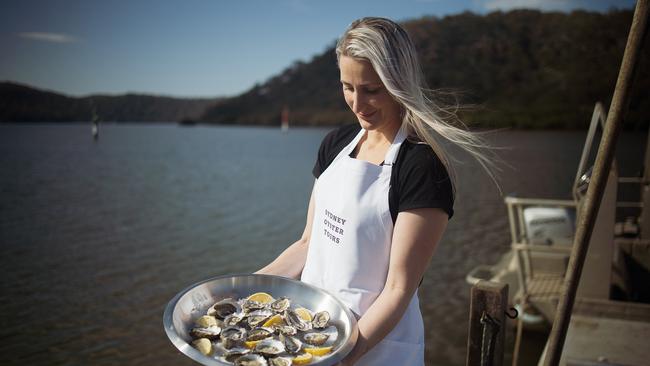
More to the story
Over my two-night stay, the weather gods throw everything at the lower Hawkesbury, There are buckets of rain, chinks of sunshine, bundles of clouds and silvery storms. And then a small miracle occurs and there’s a break of blue sky and Sheridan Beaumont of Sydney Oyster Tours is ushering me aboard her long, low punt for a motor out from Marramarra Lodge to her family company’s leases and hatcheries, narrating river history as we go.
It’s the most enjoyable excursion imaginable, passing fishing trawlers and scurrying water taxis, but my shucking abilities prove pathetic compared to Sheridan’s deft, professional touch. She’s a third-generation Broken Bay oyster farmer, who modestly mentions three young children and the small matter of completing her medical degree.
We stop for lunch at Twin Beaches North, where Sheridan has earlier set up a white-clothed table with French empire chairs facing the water. I rub my eyes in astonishment. Although she often uses local restaurants, such as Estuary at Brooklyn, to cater for this Elegant Oyster experience, Marramarra Lodge has sent ahead a kitchen envoy with a platter of big prawns ready to shell, crunchy salads, a chunk of baguette and creamy little tarts. We get stuck into a veritable ziggurat of Sydney rocks and Pacifics and toast Sheridan’s future plans to expand her tours to more “immersive” experiences, complete with guests donning waders and lunching at an in-river table. Sign me up, please.
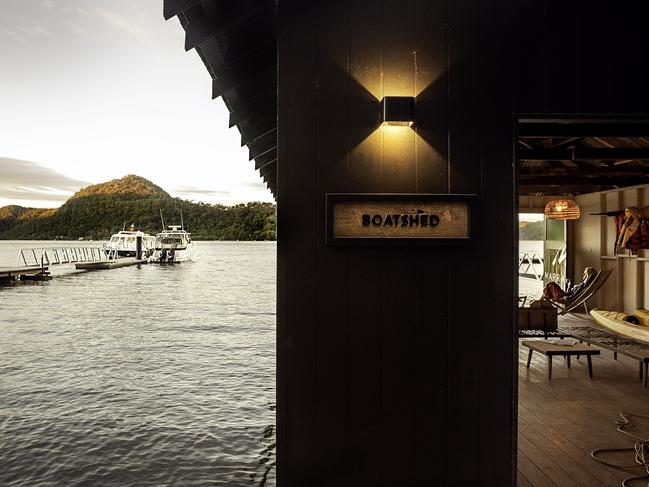
In the know
Marramarra Lodge can arrange return boat transfers to nearby restaurants such as Peats Bite and Berowra Water Inn, fishing trips, bushwalks with a Dharug elder, tours of Broken Bay Pearl Farm and regional excursions.


To join the conversation, please log in. Don't have an account? Register
Join the conversation, you are commenting as Logout